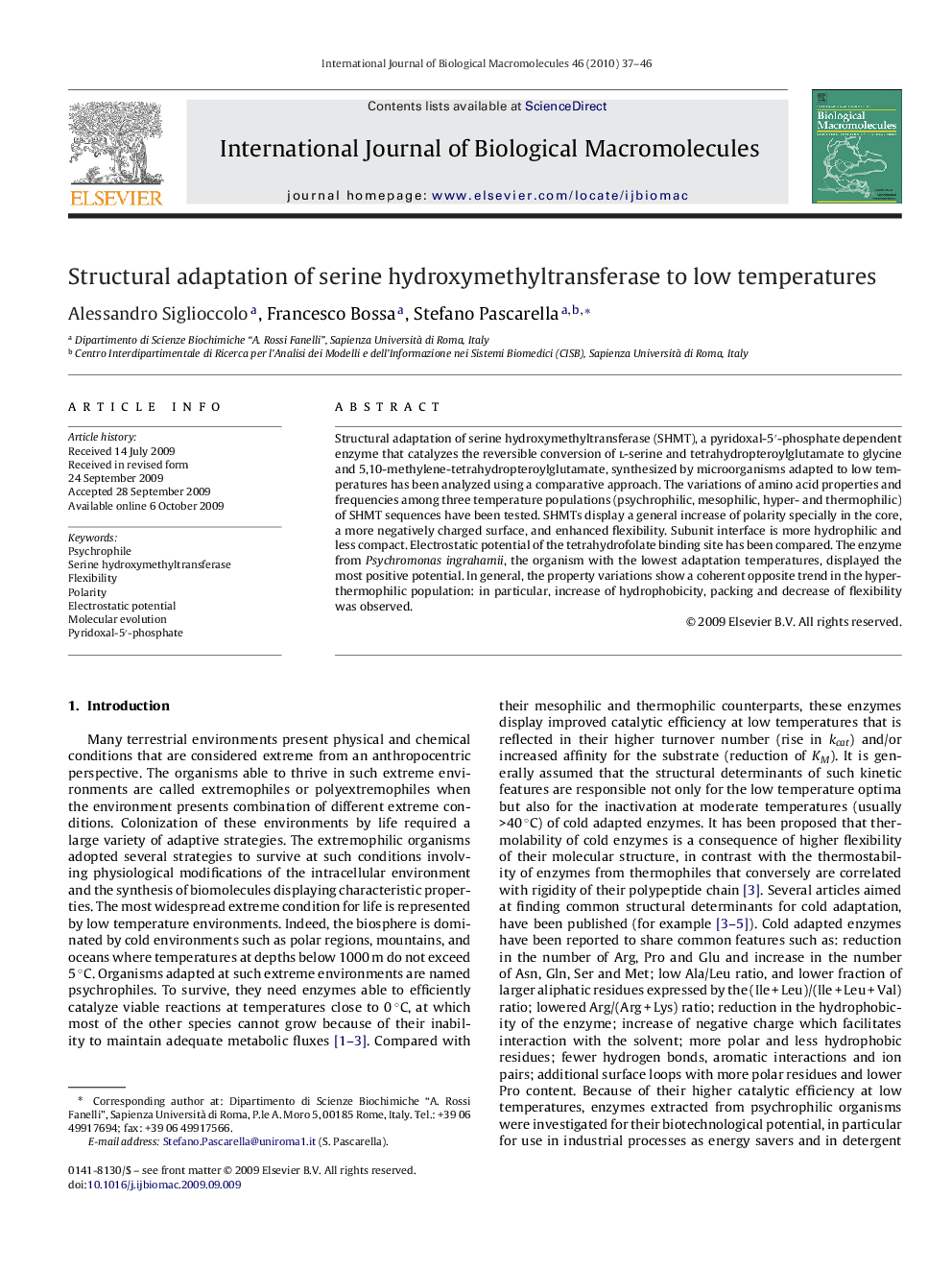| Article ID | Journal | Published Year | Pages | File Type |
|---|---|---|---|---|
| 1987755 | International Journal of Biological Macromolecules | 2010 | 10 Pages |
Abstract
Structural adaptation of serine hydroxymethyltransferase (SHMT), a pyridoxal-5â²-phosphate dependent enzyme that catalyzes the reversible conversion of l-serine and tetrahydropteroylglutamate to glycine and 5,10-methylene-tetrahydropteroylglutamate, synthesized by microorganisms adapted to low temperatures has been analyzed using a comparative approach. The variations of amino acid properties and frequencies among three temperature populations (psychrophilic, mesophilic, hyper- and thermophilic) of SHMT sequences have been tested. SHMTs display a general increase of polarity specially in the core, a more negatively charged surface, and enhanced flexibility. Subunit interface is more hydrophilic and less compact. Electrostatic potential of the tetrahydrofolate binding site has been compared. The enzyme from Psychromonas ingrahamii, the organism with the lowest adaptation temperatures, displayed the most positive potential. In general, the property variations show a coherent opposite trend in the hyperthermophilic population: in particular, increase of hydrophobicity, packing and decrease of flexibility was observed.
Keywords
Related Topics
Life Sciences
Biochemistry, Genetics and Molecular Biology
Biochemistry
Authors
Alessandro Siglioccolo, Francesco Bossa, Stefano Pascarella,
